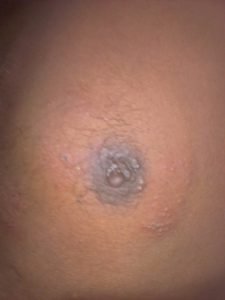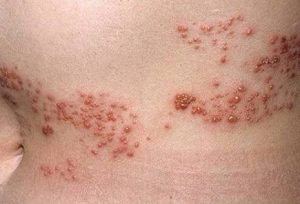Viral Infections
Viruses are obligatory intracellular parasites. It is a small particle of genetic material (either DNA or RNA) that are surrounded by a protein coat. Some viruses also have a fatty envelope covering. They are incapable of reproducing on their own. A viral infection is a proliferation of a harmful virus inside the body. Viruses cannot reproduce without the assistance of a host. Viruses infect a host by introducing their genetic material into the cells and hijacking the cell’s internal machinery to make more virus particles. With an active viral infection, a virus makes copies of itself and bursts the host cell (killing it) to set the newly-formed virus particles free. In other cases, virus particles bud off the host cell over a period of time before killing the host cell. Either way, new virus particles are then free to infect other cells. Viruses get a bad rap, but they also perform many important functions for humans, plants, animals, and the environment. For example, some viruses protect the host against other infections. Viruses also participate in the process of evolution by transferring genes among different species.




The following types of viral infections of the skin are tracked by Tibot
HERPES SIMPLEX (ECZEMA HERPETICUM)
HERPES SIMPLEX 2
MOLLUSCUM CONTAGIOSUM
SHINGLES
VIRAL EXANTHEM
WARTS (VERRUCA)
- Viral illness occurs as a result of cell damage
- Tissue destruction, and the associated immune response.
- Red erythematous skin
- Painful skin
- Itching
- Blister like rash
- Warty lesion in the skin and many more symptoms observe.
So, the symptoms are different.
Contagiousness refers to the ability of a virus to be transmitted from one person (or host) to another. Viral infections are contagious for varying periods of time depending on the virus. An incubation period refers to the time between exposure to a virus (or other pathogen) and the emergence of symptoms. The contagious period of a virus is not necessarily the same as the incubation period.
Many viral infections resolve on their own without treatment. Other times, treatment of viral infections focuses on symptom relief, not fighting the virus. For example, cold medicine helps alleviate the pain and congestion associated with the cold, but it doesn’t act directly on the cold virus.
There are some medications that work directly on viruses. These are called antiviral medications. They work by inhibiting the production of virus particles. Some interfere with the production of viral DNA. Others prevent viruses from entering host cells. There are other ways in which these medications work. In general, antiviral medications are most effective when they’re taken early on in the course of an initial viral infection or a recurrent outbreak. Different kinds of antiviral medications may be used to treat chickenpox, shingles, herpes simplex virus-1 (HSV-1), herpes simplex virus-2 (HSV-2), HIV, hepatitis B, hepatitis C, and influenza.
- To confirm your analyze
- When you start medication
- Andrews’ Diseases of the Skin
- Oxford handbook of Medical Dermatology
Viral Infections
TUI - Tibot Urgency Index


Viruses are obligatory intracellular parasites. It is a small particle of genetic material (either DNA or RNA) that are surrounded by a protein coat. Some viruses also have a fatty envelope covering. They are incapable of reproducing on their own. A viral infection is a proliferation of a harmful virus inside the body. Viruses cannot reproduce without the assistance of a host. Viruses infect a host by introducing their genetic material into the cells and hijacking the cell’s internal machinery to make more virus particles. With an active viral infection, a virus makes copies of itself and bursts the host cell (killing it) to set the newly-formed virus particles free. In other cases, virus particles bud off the host cell over a period of time before killing the host cell. Either way, new virus particles are then free to infect other cells. Viruses get a bad rap, but they also perform many important functions for humans, plants, animals, and the environment. For example, some viruses protect the host against other infections. Viruses also participate in the process of evolution by transferring genes among different species.






The following types of viral infections of the skin are tracked by Tibot
HERPES SIMPLEX (ECZEMA HERPETICUM)
HERPES SIMPLEX 2
MOLLUSCUM CONTAGIOSUM
SHINGLES
VIRAL EXANTHEM
WARTS (VERRUCA)
- Viral illness occurs as a result of cell damage
- Tissue destruction, and the associated immune response.
- Red erythematous skin
- Painful skin
- Itching
- Blister like rash
- Warty lesion in the skin and many more symptoms observe.
So, the symptoms are different.
Contagiousness refers to the ability of a virus to be transmitted from one person (or host) to another. Viral infections are contagious for varying periods of time depending on the virus. An incubation period refers to the time between exposure to a virus (or other pathogen) and the emergence of symptoms. The contagious period of a virus is not necessarily the same as the incubation period.
Many viral infections resolve on their own without treatment. Other times, treatment of viral infections focuses on symptom relief, not fighting the virus. For example, cold medicine helps alleviate the pain and congestion associated with the cold, but it doesn’t act directly on the cold virus.
There are some medications that work directly on viruses. These are called antiviral medications. They work by inhibiting the production of virus particles. Some interfere with the production of viral DNA. Others prevent viruses from entering host cells. There are other ways in which these medications work. In general, antiviral medications are most effective when they’re taken early on in the course of an initial viral infection or a recurrent outbreak. Different kinds of antiviral medications may be used to treat chickenpox, shingles, herpes simplex virus-1 (HSV-1), herpes simplex virus-2 (HSV-2), HIV, hepatitis B, hepatitis C, and influenza.
- To confirm your analyze
- When you start medication
- Andrews’ Diseases of the Skin
- Oxford handbook of Medical Dermatology




